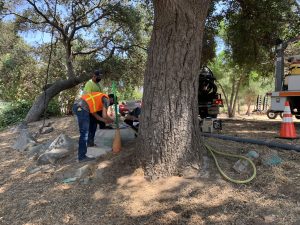Study working to estimate what portion of human fecal contamination in San Diego waterways attributable to public sewers

SCCWRP and its partners have begun working to estimate what portion of human fecal contamination in the San Diego River watershed can be attributed to raw wastewater exfiltrating from public sewer systems, following the successful completion of field-testing of a representative sample of pipes in the watershed.
The findings of the public sewer investigation, which are expected to be finalized and released publicly in March, are expected to provide key insights supporting an ongoing, multi-component study investigating multiple potential sources of fecal contamination in the San Diego River watershed during wet weather. Researchers are also investigating potential contributions from sanitary sewers, private sewer lateral lines and septic tanks during both wet and dry weather.
The public sewer exfiltration investigation involved testing more than 20 underground sewer pipes in the San Diego watershed for leaks using a newly developed method that can detect volumetric losses of as little as a one liter out of 4,000 liters. The method, which was developed by SCCWRP, involves pumping a known volume of water at a controlled rate through an isolated section of sewer pipe, then looking at the difference in volume pumped in vs. recovered.
More news related to: Microbial Source Tracking, Microbial Water Quality